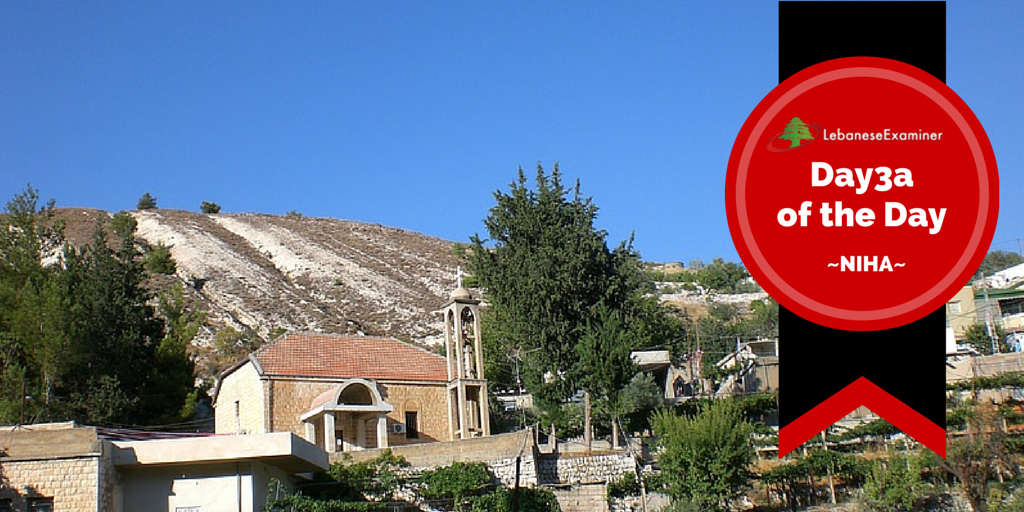Niha (Arabic: نيحا) is a village in the Bekaa Valley about 8 km north of Zahlé. It is famous for its Roman archeological ruins, and in particular two lower Roman temples that date back to the 1st century AD.
The name Niha is used by four Lebanese towns or villages: Niha, Zahlé in the Bekaa; Niha, Batroun; Niha, Tyre and Niha, Chouf. The word neeha is Syriac and denotes a place of calm and tranquility.
While there are no records of the original date of the establishment of the village, its history largely follows the history of Lebanon marked by various invading armies over several millennia, and by the feudal system that was the norm during the Ottoman occupation.
The Bekaa Valley was a Byzantine stronghold until the Islamic conquest. After the arrival of Islam, many parts of Mount Lebanon, notably the Keserwan, were inhabited by a Shiite population that enjoyed the patronage of the Fatimids.
With the arrival of the Crusades and the Mamluks during the 12th and 13th centuries, the Shiites fled to the Bekaa where they remain today especially in the northern parts (notably the Baalbeck region).
With the arrival of the Ottomans in the 16th century, the Bekaa region was made part of the vilayet of Damascus.
The 19th century witnessed the migration of Christian families from Mount Lebanon (notably Keserwan and Matn regions) to the Bekaa. Spotty records indicate that an agreement was forged in the 19th century between the Shiite and Christian clans to exchange territories.
The Christians of Tamnine exchanged lands with the Shiite inhabitants of Niha, the result of which Tamnine became a majority Shiite village, and Niha became a majority Christian village.
Until the 1960s, the population dressed in traditional Lebanese costumes, notably the male Sherwal garment characterized by baggy pants and headdresses, or the Gambaz, a long gown also worn by men. As the population modernized and education became widespread, western dresses became the norm. Traditional dresses are only worn today during celebratory festivities.
The village is located about 65 km East of the Lebanese capital Beirut off the main road that leads to Baalbeck. It is 8 km North of Zahlé and nearly 2 km North-East of the town of Ablah.
The village sits in a small canyon at an average altitude of 1,100 m (3,600 ft). It is surrounded by fast rising hills with vertical drops of 150 m (500 ft). The canyon narrows and rises to the back country of Niha also known as the “Hosn” (in Arabic, hosn means fortress) at an approximate elevation of 1,350 m (4,400 ft).
The mountains continue to rise over some ten kilometers to reach the top of Mount Sannine at 2,628 m (8,622 ft).
RELATED: Last week’s Day3a of the Day was Aley. Click here to read more.
For more information about the Lebanese Examiner “Day3a of the Day,” click here.
Content validated and reprinted via Wikimedia’s Creative Commons License.






